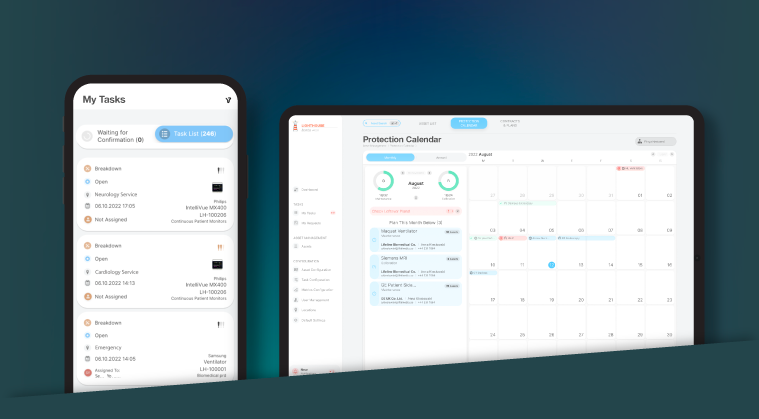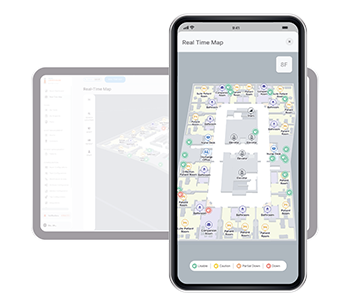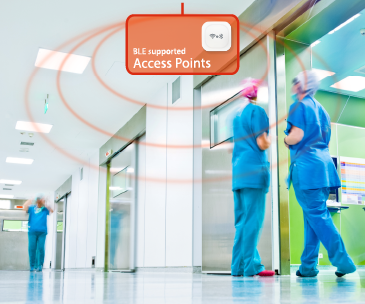
How to improve patient experience & safety through RTLS in hospitals?
How to improve patient experience & safety through RTLS in hospitals?
Hospitals are busy and complex environments that can change and differ from day to day. Traditional and document-based-manual methods make it impossible to keep track of daily operations, resulting in a variety of issues and problems. In reality, many hospitals are experiencing a staffing and resource shortage, resulting in overworked and stressed employees who are unable to provide the necessary care and attention to patients.
Real-time location systems (RTLS) improve hospital operations by providing real-time location information and allowing for more efficient and effective resource management. RTLS technology employs a combination of sensors and tags to track the real-time location of patients, assets, personnel, and environmental conditions.
Reduction in patient waiting time
The patient’s waiting time in the OR can have a significant impact on overall efficiency and patient satisfaction. Long wait times can cause delays and disruptions in healthcare, resulting in lower patient satisfaction and higher costs. Scheduling surgeries and coordinating the availability of operating rooms and medical devices can be a time-consuming and complex problem. Furthermore, because operating rooms have a limited number of beds and staff, they can only accommodate a certain number of patients at a time. This can result in bottlenecks and patient flow delays. Patient Throughput Management improves overall patient satisfaction by reducing waiting times and improving healthcare quality and saving valuable time during patient care.
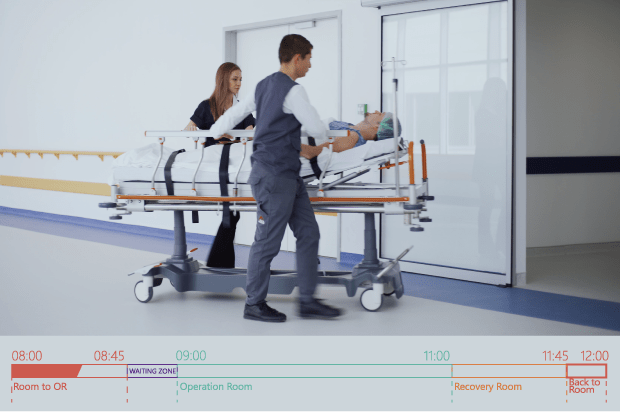
Patient Throughput / Patient Flow Management automatically tracks and traces each patient’s journey throughout the entire operation theatre processes, including length of stay, pre-op and post-op waiting times, transfer times in between, surgery start times, and many more. With EMR and HIS (hospital information system) integration, it is also possible to compare actual and planned data. Finally, RTLS patient tracking provides hospitals with real-time and historical insights into the utilization of operating rooms, allowing them to identify bottlenecks at any point of operation. Because of this acute operational awareness of patient flow, intelligent actions are taken to reduce idle waiting time in the OR and ensure that patients receive the best possible care.
Optimizing the task management process is another issue that reduces patient waiting time. Every day, thousands of tasks are completed in hospitals, and the task assignment process is typically managed using traditional methods. In most cases, dispatchers assign tasks to porters manually without knowing their exact workload or where they are in the hospital. This problem leads to increased patient idle waiting time, task completion delays, and more time spent assigning tasks.
Work Demand Management via RTLS staff tracking, reduces manual processes by assigning tasks to the most appropriate personnel based on real-time location and workload information. As a result, patient satisfaction is higher while labor costs are lower.
Asset availability for patient care
The availability of critical assets for patient care can be a matter of life and death. Maybe you have assets, but they’re in the wrong place or you don’t know where they are. Asset Utilization via RTLS asset tracking enables hospital staff to quickly and easily locate and access the assets required for each patient in a matter of seconds. This can help to reduce waiting times and improve care efficiency, resulting in a better overall patient experience and higher levels of satisfaction without any life-threatening delays.
RTLS can also be used to monitor the preventative maintenance/calibration/breakdown status of hospital assets, allowing hospitals to plan maintenance and repairs ahead of time to avoid equipment downtime. This can help to ensure that assets are always available when needed, which can improve patient satisfaction even more.
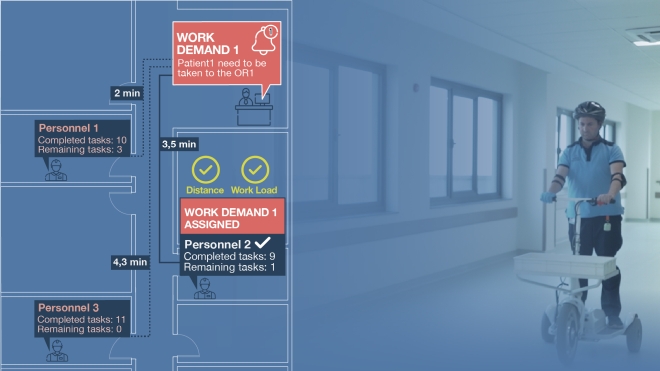
Traditional methods of managing maintenance and calibration processes may result in asset maintenance gaps and serious medical errors. Asset Management (Healthcare CMMS with RTLS capability) products enable you to schedule, track, and manage all preventative maintenance and calibration processes in a timely manner, ensuring that asset assets are well-maintained, calibrated, and ready to use before using patient care. Additionally, if assets that have not been maintained or calibrated enter the operating room, real-time notifications are sent to the responsible staff.
Peace of mind for patients
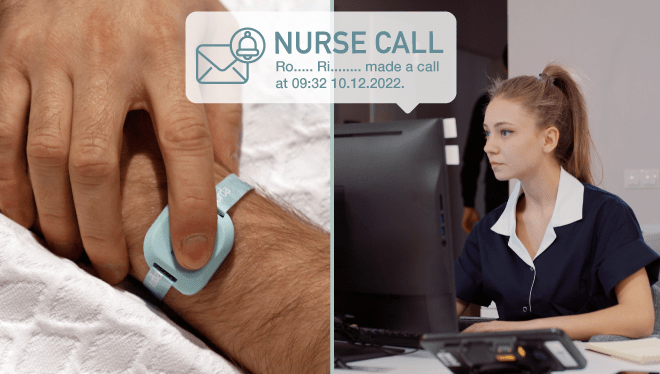
One of the most important concerns in any healthcare facility is patient safety. Providing safe and effective care to patients is a top priority for hospitals, but this can be difficult given that thousands of patients and hundreds of healthcare staff are present every day. By providing real-time tracking and monitoring of patient location and movement, RTLS technology in healthcare facilities can help to improve patient safety. Patient Safety products allow wandering patients to make a Nurse Call at any time of day or night by pressing a button on their wristbands.
Infant / Baby Safety solution provides parents with peace of mind by continuously monitoring each baby with pinpoint accuracy and protects infants by sending instant real-time alerts when infants leave their safe areas without authorization. Furthermore, Infant Protection products pair infants with their mothers to avoid baby mismatches.
Overall, “IoT for Healthcare” provides powerful solutions for improving hospital patient satisfaction. RTLS can help to reduce wait times, improve the availability of equipment and supplies, and improve overall quality of care by providing real-time visibility into the location and status of hospital assets and people. This can result in higher levels of patient satisfaction and better patient outcomes.
If you want to take your patient experience to the next level and learn about other products, get in touch with us!


